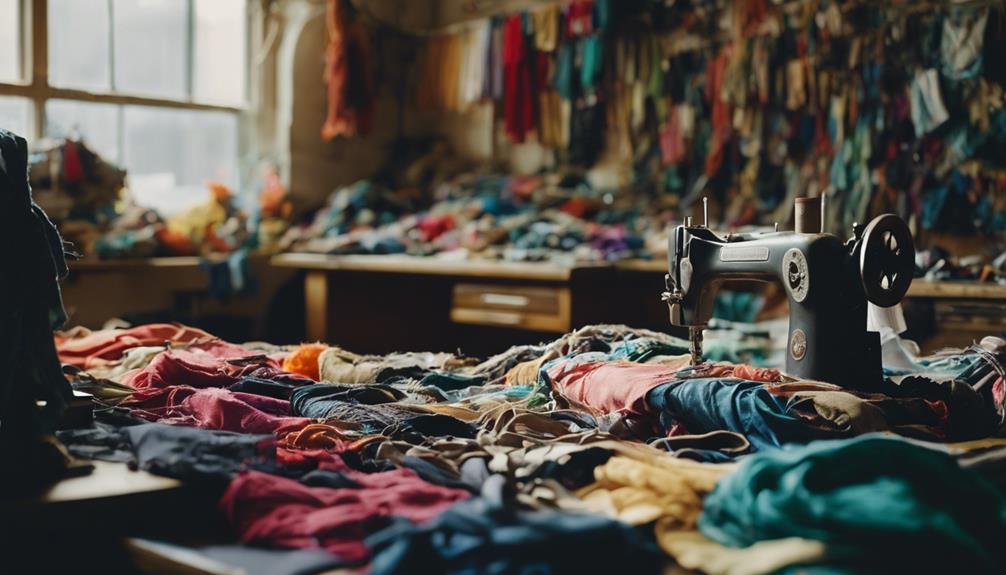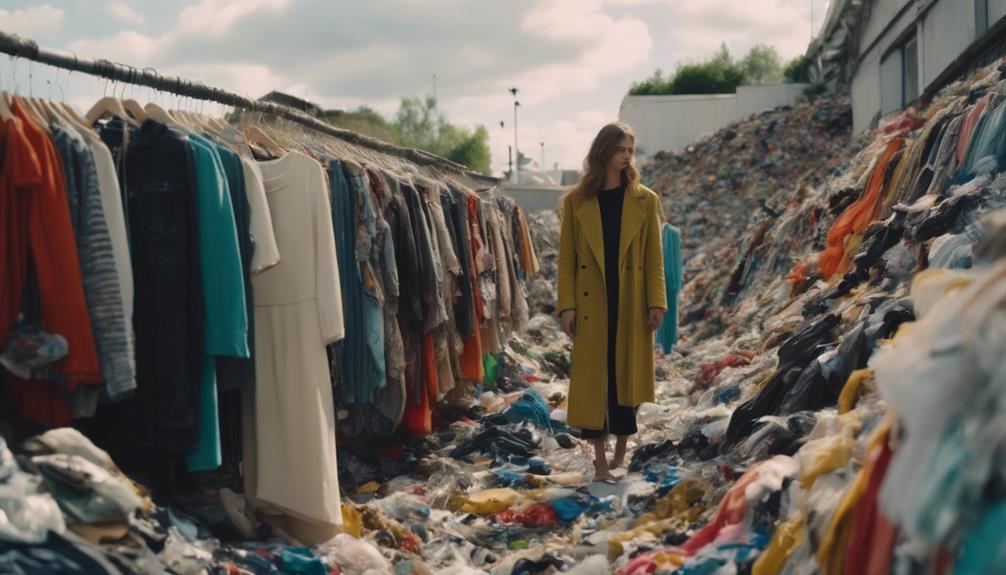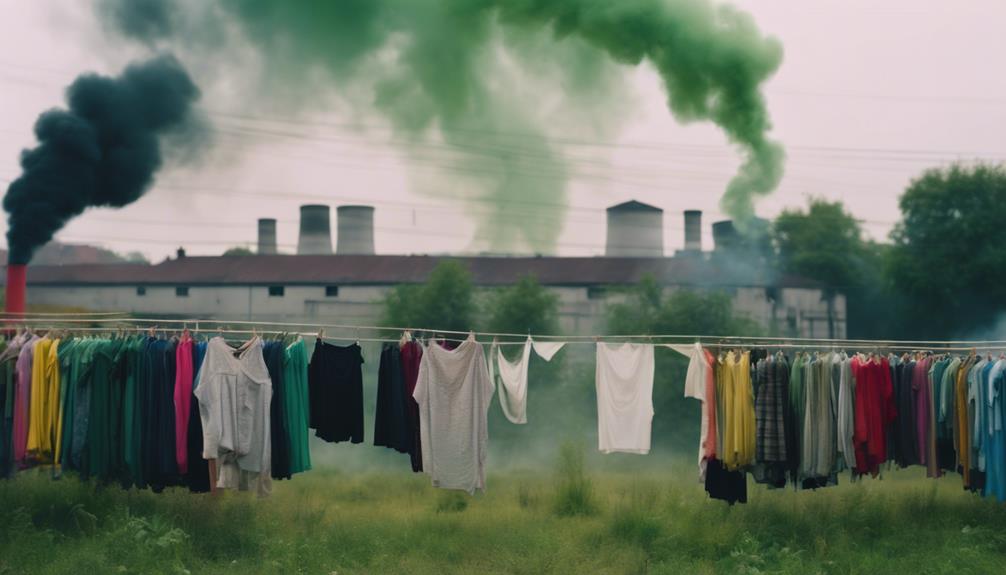Sustainable fashion often fails to deliver on its promises. Many brands promote eco-friendly materials while still heavily relying on non-biodegradable options. It may come as a surprise that as much as 75% of these sustainability claims are deceptive. Even rental and resale models struggle to effectively address fundamental environmental issues, only offering “less unsustainable” alternatives. Current recycling efforts typically do not target the root causes of waste. In the absence of stricter regulations, the industry gives the impression of progress being made. If you are interested in understanding how this impacts your decisions, there is more information available for you.
Key Takeaways
- Fast fashion brands often mislead consumers with sustainability claims, masking their reliance on non-biodegradable materials.
- Many touted innovations, like bio-based materials, fail to create significant changes in environmental impact.
- Recycling initiatives frequently downcycle materials, not addressing the root causes of fashion waste.
- The fashion industry generates 92 million tons of waste annually, indicating a lack of real sustainability progress.
Industry Claims Vs. Reality
When you look at the fashion industry's claims about sustainability, it's critical to ignore the stark contrast between those promises and the harsh reality of its environmental impact. Many fast fashion brands market their products as ethical and sustainable, often highlighting the use of sustainable materials. However, the truth is that the majority of clothing still relies on non-biodegradable materials, contributing to the growing landfill crisis.
Innovations like bio-based materials and recycling initiatives have made headlines, but they rarely translate to meaningful change in the overall supply chain. The notion that some brands are “less unsustainable” is misleading; it doesn't equate to true sustainability. Most marketed sustainable items, such as carbon-positive or organic clothing, often mask the fact that a significant portion still ends up in landfills.
This discrepancy highlights an urgent need for stringent definitions and standards in sustainability. Without regulatory intervention, accountability in the fashion industry remains elusive. As consumers, it's critical to question these claims and demand transparency, ensuring that the pursuit of ethical and sustainable fashion truly aligns with reducing the industry's environmental impact.
Greenwashing and Misleading Marketing

Greenwashing has become a common tactic in the fashion industry, where brands often exaggerate their sustainability efforts to mislead consumers. You might notice sustainable brands touting their eco-friendly collections, yet many are still engaged in fast fashion practices that contradict their claims. Studies reveal that up to 75% of sustainability claims made by these brands could be misleading, leaving you confused about what true sustainability really looks like.
Misleading marketing practices allow brands to present superficial changes as significant advancements. They might promote recycled materials while neglecting to address their overall environmental impact. Certifications and labels are essential for identifying authentic sustainable practices, but many brands exploit these by falsely claiming eco-friendly credentials without meeting the necessary standards.
As a consumer, it's important to critically assess brands' claims and practices. Don't be swayed by catchy slogans or green imagery; instead, dig deeper into a brand's overall practices. By doing so, you can support genuine efforts toward sustainability and hold brands accountable for their actions.
Innovations That Missed the Mark

You might think that innovations in sustainable fashion are making a real difference, but many claims just don't hold up under scrutiny.
Recycling initiatives and new business models often fall short, leaving you questioning their actual impact.
As we explore these missed opportunities, it's essential to recognize how misleading sustainability claims can hinder real progress.
Misleading Sustainability Claims
Frequently, the fashion industry touts innovative solutions like bio-based materials and recycling initiatives, yet these efforts often fall short of delivering real sustainability. You might find it surprising that the overall environmental impact of this industry hasn't improved in the last 25 years. Many so-called sustainable brands still rely heavily on non-biodegradable, petroleum-based materials, leading to extensive landfill waste. This clearly contradicts their misleading sustainability claims.
You may also have heard of concepts like Rent-the-Runway, marketed as sustainable options. However, these innovative business models often fail to tackle the root causes of environmental degradation. The fashion industry's marketing can mislead you into thinking that ‘less unsustainable' practices equate to genuine sustainability. In reality, they don't yield meaningful environmental benefits.
To really address the fashion industry's carbon footprint, we need regulatory frameworks that hold companies accountable for their environmental impact. Market-based solutions have proven insufficient, leaving consumers like you to sort through the claims and discern what's truly sustainable. As you navigate this complex landscape, remember that not all innovations lead to genuine change.
Ineffective Recycling Initiatives
Despite the fashion industry's push for recycling initiatives, many of these innovations miss the mark and fail to make a meaningful impact on sustainability. Initiatives like Rent-the-Runway haven't notably reduced the environmental impact of fast fashion. High-profile innovations, including bio-based materials and various recycling programs, often fall short of achieving their sustainability goals, leaving the footprint largely unchanged.
You might be surprised to learn that most fashion products are still crafted from non-biodegradable, petroleum-based materials. This contributes to the staggering 92 million tons of waste generated annually by the fast fashion industry. Current recycling models tend to address symptoms rather than the root causes of environmental degradation. They don't alter the production and consumption patterns that lead to waste.
A common misconception persists that adopting 'less unsustainable' alternatives equates to true sustainability. This undermines the effectiveness of recycling initiatives in the fashion industry.
If you want to support genuine sustainability, it's essential to look beyond ineffective recycling initiatives and demand systemic changes that genuinely tackle the environmental crisis.
The Role of Regulation

Regulatory intervention is essential in holding fashion companies accountable for their environmental impacts, as voluntary measures have often fallen short in promoting true sustainability. Without government action, many brands evade responsibility, allowing unsustainable practices to persist despite their claims of environmental commitment.
Stricter sustainability standards could guarantee that companies genuinely engage in environmentally responsible practices, rather than merely participating in greenwashing to enhance their image. The current lack of regulations has fostered an illusion of progress within the fashion industry, while many brands continue to rely on non-biodegradable materials that harm the planet.
Business Models and Their Flaws

When you think about sustainable fashion, it's easy to assume that renting or reselling clothes is enough to make an impact.
However, these business models often fall short, failing to tackle the deeper issues behind environmental harm.
Understanding the limits of recycling and the misconceptions surrounding these practices is essential for pushing the industry toward true sustainability.
Rent and Resale Limits
Rent and resale business models in fashion often mask a deeper problem, as they fail to greatly reduce environmental impacts while encouraging overconsumption. While these models are marketed as sustainable solutions, they frequently fall short.
Rental platforms struggle to achieve scale and profitability, serving a limited market and not addressing the systemic issues of overproduction and resource depletion prevalent in fast fashion.
Moreover, resale options often rely on the same fast fashion supply chains that churn out low-quality garments. These items have short lifespans and contribute to high turnover rates, which ultimately undermines the sustainability goals these models claim to support.
Critics argue that these practices create a false sense of sustainability, promoting 'less unsustainable' options rather than genuinely reducing the environmental impact of the fashion industry.
Research shows that engaging in rent and resale may even encourage you to buy more frequently, perpetuating the cycle of overconsumption. Instead of fostering a culture of mindful purchasing, these models can lead to increased waste and environmental degradation, leaving you to question whether they truly offer the sustainable solutions that the fashion industry desperately needs.
Recycling Misconceptions Explained
Despite the appeal of recycling in the fashion industry as a sustainable solution, many misconceptions surround its effectiveness and the true impact of these business models.
You may believe that recycling can greatly reduce the environmental impact of fast fashion, but the reality is often disappointing. Most recycling initiatives focus on downcycling, turning materials into lower-quality products rather than fully recycling them back into usable textiles, which perpetuates waste.
Consumer behavior plays a vital role in this dilemma. Many people don't actively participate in recycling programs or continue to buy excessive amounts of fast fashion, further complicating the issue. Studies show that the average consumer wears only a fraction of their wardrobe, leading to an overwhelming surplus of discarded clothing that recycling programs can't manage effectively.
Additionally, financial barriers and a lack of investment in sustainable recycling technologies limit the potential for effective recycling solutions in the fashion industry.
Path Forward for Sustainable Fashion

To truly transform the fashion industry, we need to focus on systemic change that tackles the root causes of environmental issues rather than just implementing isolated solutions. This means shifting our collective mindset towards a more sustainable and ethical approach.
Here are three key areas to reflect upon:
- Collaboration: Brands, investors, and consumers must come together to drive genuine progress. You can support brands that prioritize ethical manufacturing processes and transparency.
- Regulatory Action: Advocacy for stricter regulations is essential. By holding companies accountable for their environmental impacts, we can encourage more sustainable practices across the industry.
- Education: As a consumer, understanding the true impacts of your shopping habits is significant. Educate yourself to recognize genuine sustainable brands, steering clear of greenwashing tactics.
Frequently Asked Questions
Can Fashion Really Be Sustainable?
You might wonder if fashion can truly be sustainable. While some brands promote eco-friendly practices, the industry still grapples with waste and overconsumption. Real change demands a deeper commitment to ethical production and mindful consumer habits. One of the biggest challenges in achieving sustainable fashion is the perception of it being elitist. Many people believe that eco-friendly clothing is expensive and inaccessible, perpetuating the cycle of overconsumption. However, there is a growing movement to make sustainable fashion more inclusive and affordable, showing that it is possible to break free from the idea of sustainable fashion and elitism. It is crucial for consumers to support brands that prioritize ethical production and to embrace a more mindful approach to their wardrobe choices.
Do People Really Care About Sustainable Fashion?
Yes, people do care about sustainable fashion. Over 70% of shoppers want to support environmentally responsible brands. However, many struggle to align their intentions with their shopping habits, often choosing convenience over sustainability.
What Is the Problem With Sustainable Fashion?
Every year, the fashion industry generates 92 million tons of waste. The problem with sustainable fashion lies in misleading claims and insufficient accountability, making it tough for you to discern genuine sustainability from mere marketing hype.
Why Most of Fashion Today Is Not Sustainable?
Most fashion today isn't sustainable because you buy more clothes than ever, brands often use harmful materials, and recycling efforts don't address systemic issues. Without strict regulations, companies can continue unsustainable practices without accountability.
Conclusion
So, as you navigate the colorful landscape of sustainable fashion, remember it's not all sunshine and rainbows.
Behind the vibrant fabric lies a tangled web of greenwashing and missed opportunities.
While some brands aim for genuine change, others dance around the truth, leaving you to sift through the glitter for real impact.
Embrace the journey, demand transparency, and help weave a future where fashion honors both the planet and its people.
The fabric of change starts with you.









